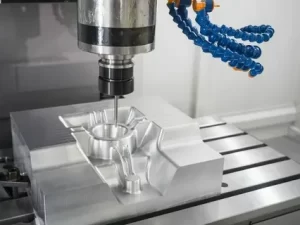Your non-profit website isn’t just for showcasing information, and it serves a purpose beyond this. In the digital age, it can be your tool for engagement, fundraising, and storytelling, but are you actually doing it right? What good is a non-profit website if it can’t serve its purpose which is to convince or convert? The key behind a successful nonprofit lies in its design, navigation, and overall feel.
Visitors to such websites aren’t there for their own good but to contribute to a cause. Therefore, your website must be attractive and convincing enough to ensure every visitor feels inclined to contribute. Unlike other websites, a nonprofit website must have certain elements to make the site successful.
Eager to know what these elements are? Then you’ve landed on the right page. This article will highlight 5 nonprofit site design elements that help you convert. Scroll down to unveil them in detail.
5 Nonprofit Site Design Elements That Convert
Too many nonprofit websites miss the opportunity to drive conversions just because of their website design. Whether you’re building a new website or retouching existing ones, below are some must-have design elements for nonprofit sites. From a clear and compelling mission statement to impact-focused visuals and stories, everything can influence visitors’ decision-making ability. Scroll down to learn more about all these elements.
1. Clear, Compelling Mission Statement
Your mission statement is often the first thing people look for when visiting your site. It needs to grab attention and explain your purpose within seconds of landing. Avoid hiding it in long paragraphs that visitors might skip while scanning. Feature a short, emotional statement prominently on your homepage where everyone sees it. Explain who you are, what you do, and why your work matters in clear terms.
Make your mission personal rather than corporate to create a human connection. Specific language works better than vague claims about “making a difference.” Use everyday words instead of industry jargon that confuses regular people. “We fight hunger in our community with dignity” beats “Addressing food insecurity issues.” A strong mission guides how everything else on your website sounds and looks.
2. Prominent Donation Button
One of the most effective ways to increase donations is to make your button impossible to miss. Your website should feature a clear, contrasting “Donate” button in the top right corner. Keep this button in the same spot on every page so visitors always know where to find it. Use action words like “Give Now” or “Support Our Work” instead of just “Donate.” The button should open a simple form without too many fields or distractions.
Minimize the steps needed to complete a donation to prevent people from giving up halfway. Include suggested amounts that guide donors toward meaningful contribution levels. Offer recurring donation options that turn one-time givers into monthly supporters. Add short testimonials near the form showing how donations have helped real people. Make sure your donation system works perfectly on phones since most people use them.
3. Impact-Focused Visuals and Stories
Facts inform visitors, but stories make them feel connected to your cause. Nonprofit websites need real-life examples that touch hearts and motivate action. High-quality photos showing actual people you help create instant emotional bonds. Videos work even better by bringing voices and movements to your impact stories. Short narratives about specific people work better than general claims about helping.
A beneficiary’s journey from struggle to success makes your work feel real and important. Volunteer testimonials help potential supporters imagine themselves getting involved, too. Stories about how one donation created lasting change encourage more people to give. These personal accounts bring your mission to life beyond just facts and numbers. Visitors need to see themselves as part of the solution to their chosen problem before contributing.
Recommended: How Can You Ensure 99% Uptime for Opencart Hosting?
4. Easy-to-Navigate Volunteer and Get Involved Sections
Volunteers and supporters want to help your cause if you make getting involved easy. A well-organized volunteer section turns casual interest into committed action. Clear headings guide visitors to different ways they can contribute their time. Simple bullet points explain what each volunteer role actually involves. Intuitive navigation helps people find opportunities matching their specific interests.
Offer various options like direct service, fundraising, or spreading awareness online. Include filters separating in-person tasks from those that people can do from home. Let users sort between one-time events and ongoing commitments that require scheduling. Short descriptions should explain the impact each volunteer role makes on your mission.
5. Mobile-Friendly, Fast-Loading Design
Your website must perform flawlessly on every device that visitors might use. Mobile design matters most since over half of web traffic comes from phones now. Responsive layouts are not optional but essential for modern nonprofit sites. Fast loading speeds keep impatient mobile users from leaving your site quickly. Compress all images to reduce file sizes without losing quality or impact.
Remove unnecessary scripts and code that slow down page performance. Your pages should adapt automatically to fit different screen sizes properly. Navigation menus need to work just as well on small screens as large ones. The donation process needs special attention for mobile users wanting to give. However, all this requires professional developers’ expertise. For this, you can refer to an agency for web design in Dubai and let professionals enhance your site design.
Ready to Build a Convincing Nonprofit Site?
Every element of your nonprofit website design plays an important role in convincing visitors. You can rely on professionals in the field to make your nonprofit site attractive and appealing. Contact professionals now to build a new site from scratch or retouch your existing nonprofit website.






